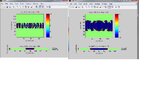sara67
Banned
Hi guys
I wrote a FDTD code for antenna
now, when i analysis s11 parameter ,that's so bad (near zero)
firstly , i calculate V,I
secondly, i calculate Zin
then , i calculate s11=zin-zs/zin+zs
but my curev is incorrect
how can i improve that ?
plz help me if you know that , I have a little time to get the right answer
I wrote a FDTD code for antenna
now, when i analysis s11 parameter ,that's so bad (near zero)
firstly , i calculate V,I
secondly, i calculate Zin
then , i calculate s11=zin-zs/zin+zs
but my curev is incorrect
how can i improve that ?
plz help me if you know that , I have a little time to get the right answer
